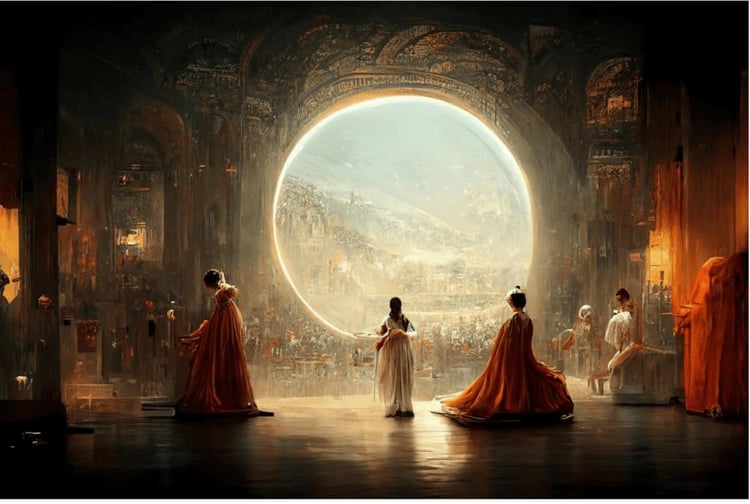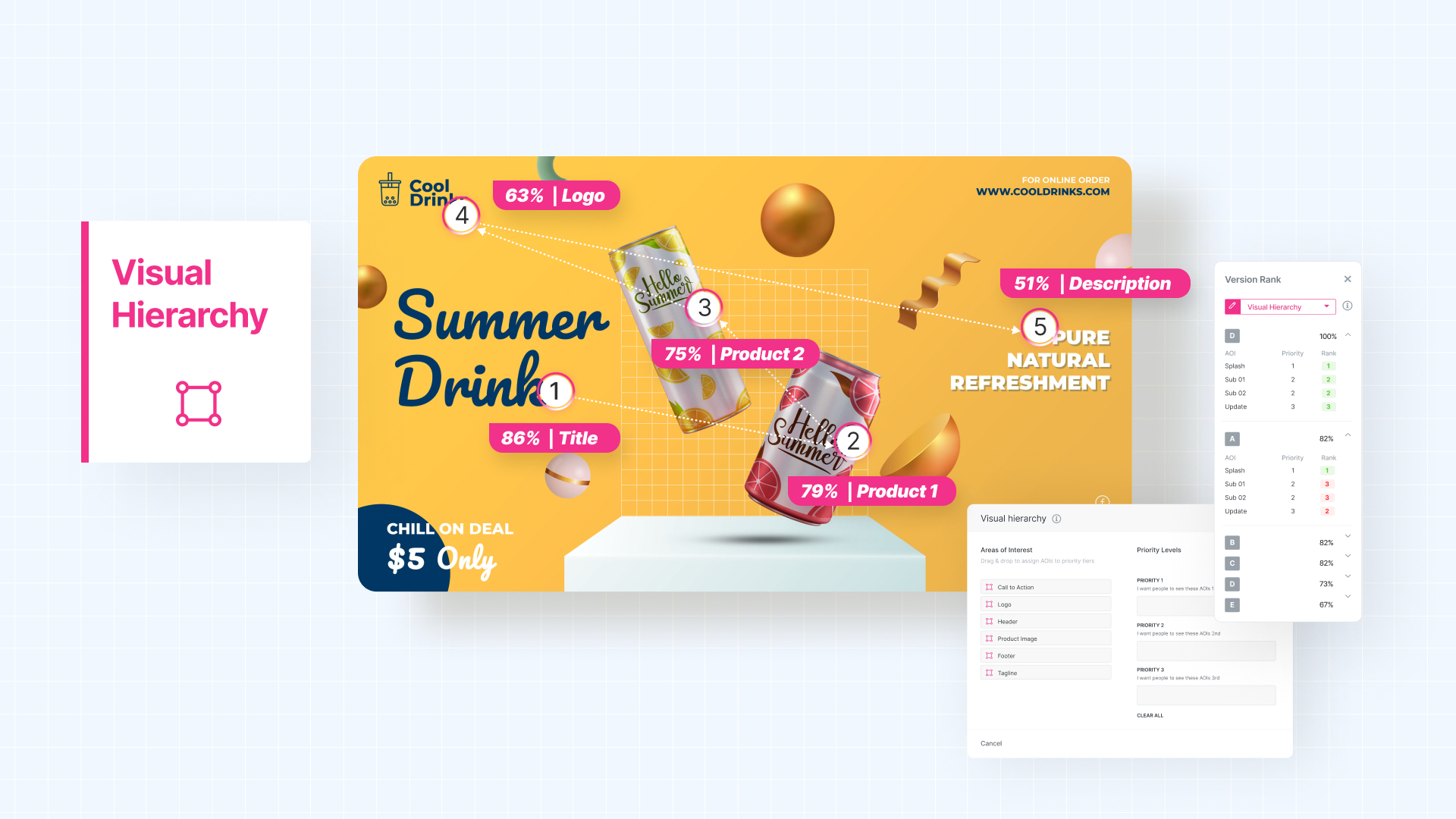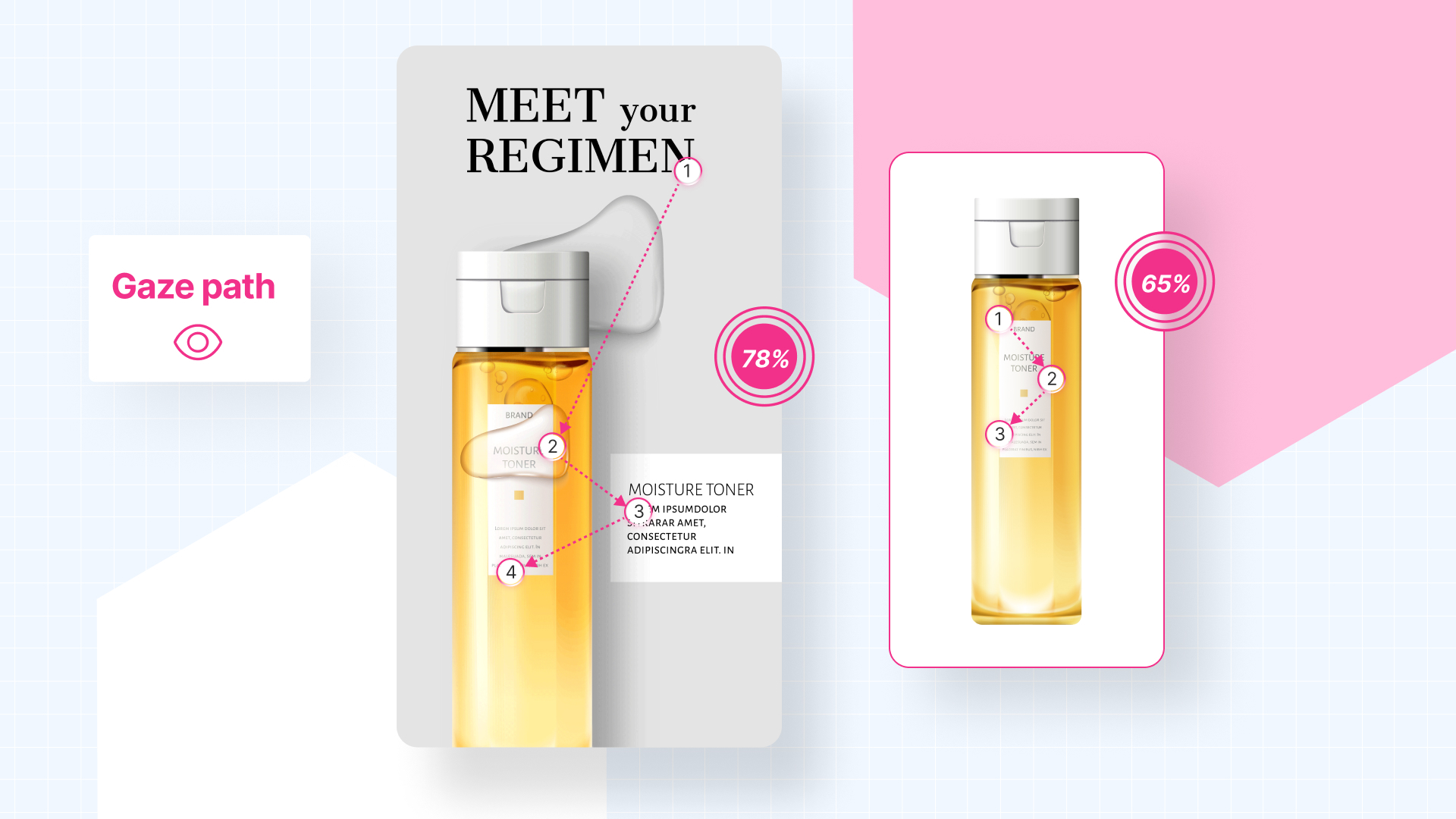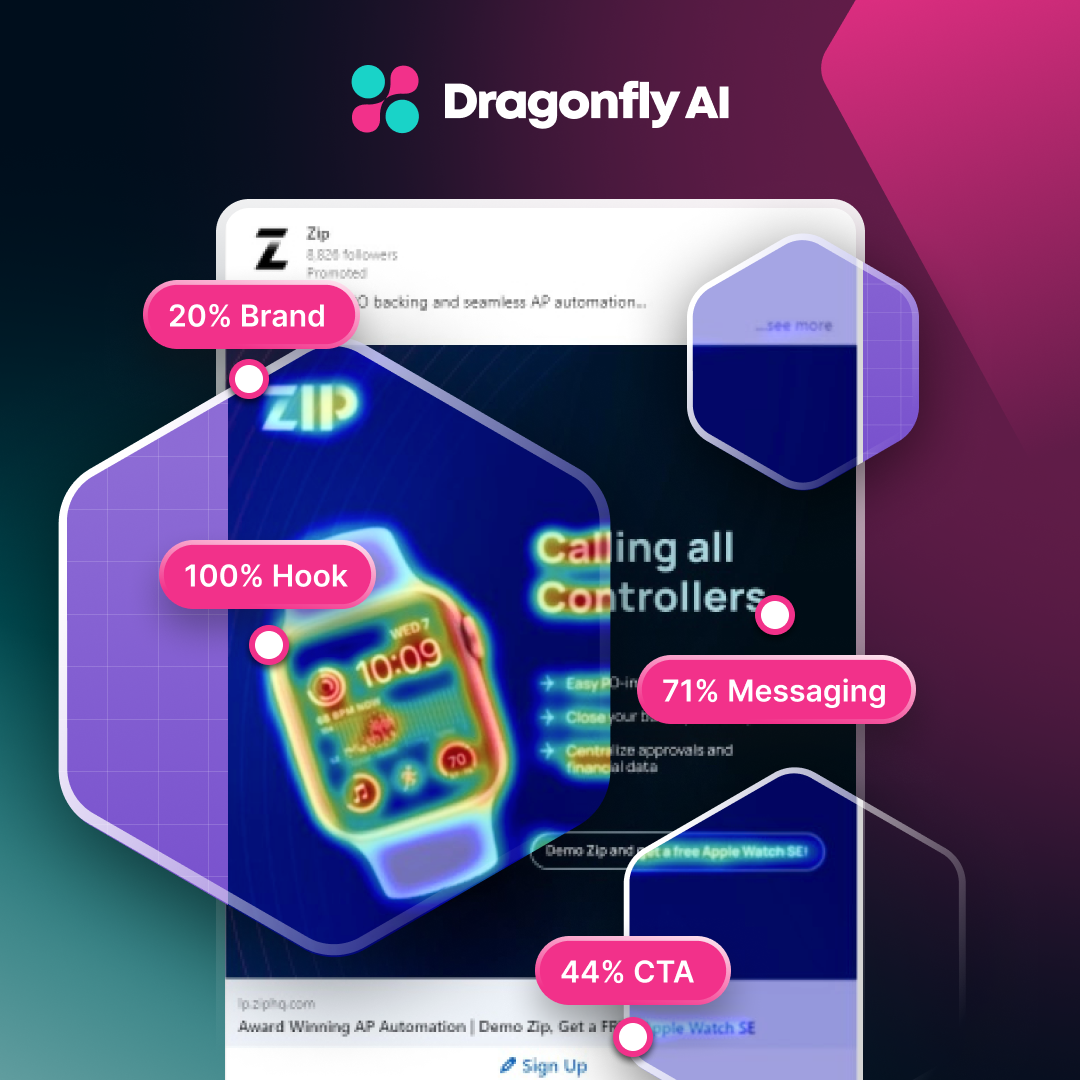In today's fast-paced world, the attention economy is a major force shaping your daily experiences. Your brains are constantly processing visual content and making split-second decisions about where to allocate your precious attention.
To stand out in this crowded and competitive landscape, organizations must embrace design processes that are not only consistent but also data-driven.
But, how is this possible?
Enter AI-powered design
By leveraging the power of AI, businesses can gain unparalleled insights into what resonates with their target audience and design with confidence.
AI can unlock hidden insights about creative design by processing data at an unprecedented scale, and provide new avenues of boosting content performance.
Here, you can explore this unique intersection of AI, data, and creative design, how it’s transforming the current landscape, and how it can become a driving force for the creative design industry moving forward.
Can AI be creative?
When a work of art created using AI won a prestigious prize last year, it caused quite a stir. More importantly, it signaled the start of a dramatic shift: AI spilling into a diverse range of creative industries. So, the question naturally arises, can AI be creative?

AI in Creative Industries
From AI tools that can construct poems in the style of your favorite writer to tools that can create mesmerizing images, AI is disrupting creative industries. Some key industries that are being tremendously influenced include:
Visual Art and Graphic Design
AI-generated media is revolutionizing the visual arts and graphics industry. Deep learning algorithms can study images to create visual and graphic designs based on input as simple as a text prompt.
The most common method being used is the ‘text-to-image’ model, where a user inputs a certain string of text and the AI tool generates visual content accordingly.
These tools can be used in a number of ways, such as helping with prototyping and mockups.
To showcase how such AI tools work, here are some original AI images generated using Midjourney:

AI image generated using prompt ‘New York City in Van Gogh style painting, oil on canvas’

AI image generated using prompt ‘hyper-realistic scenic mountain view’

AI image generated using prompt ‘sand dunes with snow in the desert’
Of course, this is just the beginning. The visual arts and graphic industry will find new ways of using AI technology to create art, such as computational creaiti. More importantly, it will help visual artists and graphic designers use AI as an assisting tool to improve their creative process.
Music
The music industry is leveraging AI in several ways. Companies such as Spotify is already using AI to understand user preferences better and suggest music accordingly.
But beyond that, AI is even being used by musicians to create music. Tools like OpenAI’s JukeBox, Adobe Creative Cloud’ VoCo , and Google Magenta’ MelodyRNN, can generate musicin a variety of genres and artistic styles.
Content Marketing (and related creative industries)
AI’s emerging role in relation to text-based content is gaining widespread popularity. From CNET getting pushback for quietly using AI to write articles, to Buzzfeed announcing its decision to use AI to process content, there’s no doubt that AI is here to stay. But while the question of AI having a ‘creative element’ remains open for debate, it’s safe to make two statements:
- AI is at a point where it can produce quality content users feel comfortable reading through.
- While the ‘creative element’ question in AI remains open, humans can use it as an assistant to create better content.
AI and Human Creativity
In its current form, AI is built in the image of its creator: humans.
It studies data provided to it and generates outcomes accordingly. If the dataset provided contains billions of images, the AI can be trained to understand what people generally perceive to be ‘great works of art’ vs. ‘poor works of art.’ Or take another case such as Dragonfly’s AI which is biologically engineered to stimulate the human brain’s response to visual stimuli. The bottom line is that AI can learn from human behavior and replicate it, but it doesn’t have any unique point of origin from which it can generate original thought.
But the implication is also that AI is better positioned to understand creativity based on an accurate judgment of human behavior. This is based on the unprecedented amount of data that it can process and learn from. So, while the answer to the question of whether AI is creative is subjective, we can say that AI can generate art that humans generally perceive to be creative.
Additionally, AI is a powerful tool to assist and empower people to create great works of art. AI can’t generate the idea for visual content out of thin air. The artist will do that. But AI can be used to improve upon that visual content.
Creative AI Insights
AI-powered technology possesses the capabilities to generate accurate data-driven creative insights. In creative design alone, AI can inform teams about what visual content users will like more vs. what they won’t in several ways. Some of them include the following:
Predicting Attention
Dragonfly AI’s biologically based algorithm predicts user attention. There are various tools in the studio that support faster decision-making on creative.
The attention map, for example, provides a simple and intuitive visualization of where attention is directed within your asset.
A further capability is a visual hierarchy that will identify elements such as the logo, product image, header, description, etc. This will highlight opportunities for optimizations so that the messaging lands as intended.

Contexts
The new Contexts tool allows creative testing in any environment. From packs to out-of-home, you can pre-test how your creativity will grab attention in the world.
Know exactly how your campaign will perform with your target audience before launch. Eradicate the potential for risk and make decisions based on data rather than intuition.

Dragonfly AI simulates the 'bottom-up' processing approach to how you as humans perceive visual information. This phase of vision happens when you first glance at something before you're even aware of what you’re looking at.
Bottom-up processing is a universal biological process across all humans, regardless of their demographic such as age, race, religion, gender, family size, ethnicity, income, and education.
Behavior research has shown that human attributes such as gender, age, or experience have little effect on where people will initially look (assuming equivalent visual acuity and other visual processing capabilities).
However, once the visual system has completed the initial surveillance process (usually 2–3 seconds), 'top-down' processing influences-personal interest, experience, and the task will play a more significant role in where people will look.
Insights from Performance Testing
Before AI, there was no efficient way to performance test visual content. The reason is that visual content grouped with other elements made it harder to understand how the visual asset itself was performing.
With AI, you can optimize visual content at scale in a much more precise and measured way. For example, Dragonfly AI studies visual content in context to understand how your visual content will perform. And, based on predictive analysis, how performance can be improved. Insights can include suggestions such as changing visual hierarchy according to optimal gaze path.

Establish Consistent Creative Quality with Dragonfly AI
If you look back and carefully observe the capabilities of AI we’ve seen so far, it all boils down to one key benefit: consistent creative quality.
In a saturated attention economy, a lack of a data-driven approach can lead to unpredictable outcomes. AI’s advanced capabilities tackle this by generating consistent results and helping you stay on track.
Dragonfly AI’s cutting-edge technology achieves exactly this. Our predictive visual analytics solution helps brands achieve consistency and quality in visual design. Put your visual content to the test by talking to our attention experts, and see how AI can help identify gaps in your content performance.









